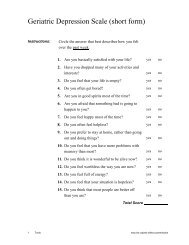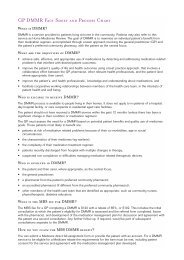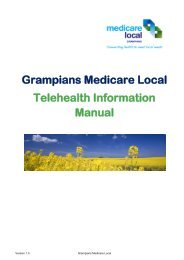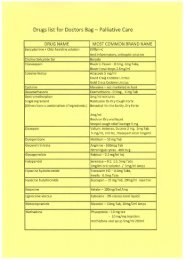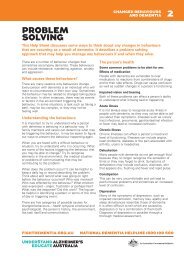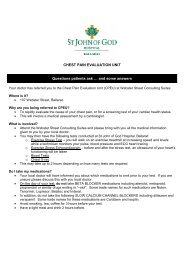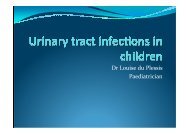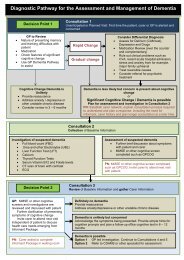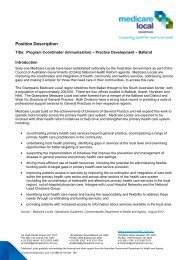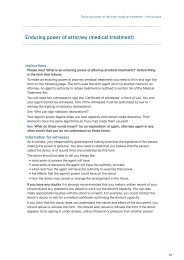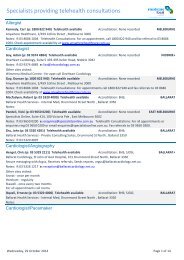Doctor's Bag: Palliative Care Information booklet - Grampians ...
Doctor's Bag: Palliative Care Information booklet - Grampians ...
Doctor's Bag: Palliative Care Information booklet - Grampians ...
You also want an ePaper? Increase the reach of your titles
YUMPU automatically turns print PDFs into web optimized ePapers that Google loves.
Respiratory<br />
Symptoms<br />
Respiratory Secretions<br />
Problems related to respiratory secretions can be caused by infection or aspiration, or by pooling of normal<br />
oropharyngeal secretions in a patient who is weak or unable to swallow or cough effectively (for instance in<br />
motor neurone disease) or who has a reduced state of consciousness. The latter situation is common as death<br />
approaches (‘death rattle’). Pulmonary oedema also causes increased respiratory secretions<br />
Pharmacological treatment for respiratory secretions include:<br />
Hyoscine hydrobromide 0.4mg S/C 3 to 4 hourly prn<br />
Hyoscine butylbromide 10-20mg S/C 4 hourly prn<br />
Glycopyrronium 0.2mg S/C (max 1.2mg/24 hours)<br />
General management can include:<br />
• Repositioning the patient from side to side in a semi-upright position is recommended as a nursing<br />
strategy for patients with terminal secretions.<br />
• Suctioning of the oropharynx is occasionally useful, but it often causes patient distress.<br />
• Counselling of relatives and caregivers is important, and reassurance that the patient is not aware of the<br />
distress can usually be given.<br />
Dyspnoea<br />
Dyspnoea (shortness of breath) is described as ‘an uncomfortable awareness of breathing’. It is a subjective<br />
symptom which may not correlate with measurable physical abnormalities such as hypoxia. Treating the<br />
dominant cause of breathlessness, including the contributing co-morbidities, is likely to be most effective, but<br />
is not always possible.<br />
(Opioids in low doses)<br />
Morphine, commencing at 2.5mg– titrate up to effect Orally or S/C<br />
(Patient may experience relief, however physically they may still look ‘short of breath’)<br />
(Associated Anxiety)<br />
Diazepam 2mg Orally or rectally twice daily<br />
Clonazepam 0.25-0.5mg Orally or S/C twice daily<br />
Midazolam 1-5mg S/C as hourly boluses or by continuous infusion, starting dose<br />
5mg (rarely sedating) to 20mg (usually sedating) per 24 hours




